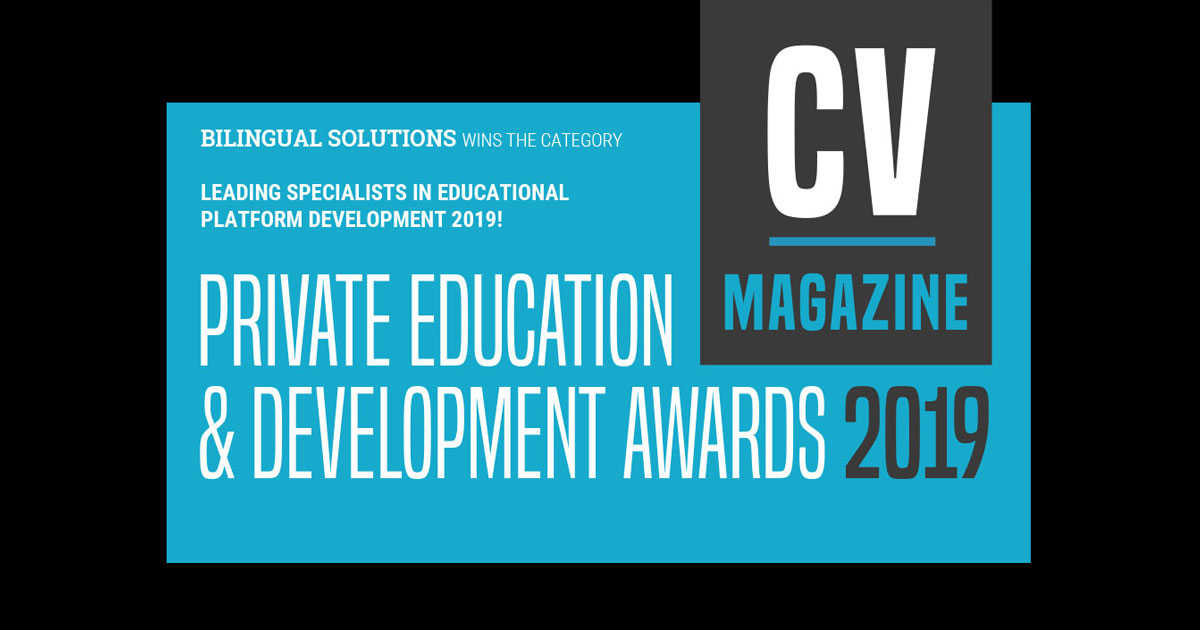E-Learning Creation
Skills are necessary for learners to master, in order for them to experience school and life success in an increasingly digital and connected age; includes digital literacy, traditional literacy, content knowledge, media literacy, and learning/innovation skills.
We identify learning needs based on learning theories and apply the core Methodology of ADDIE and other models of instructional design to create effective learning materials.
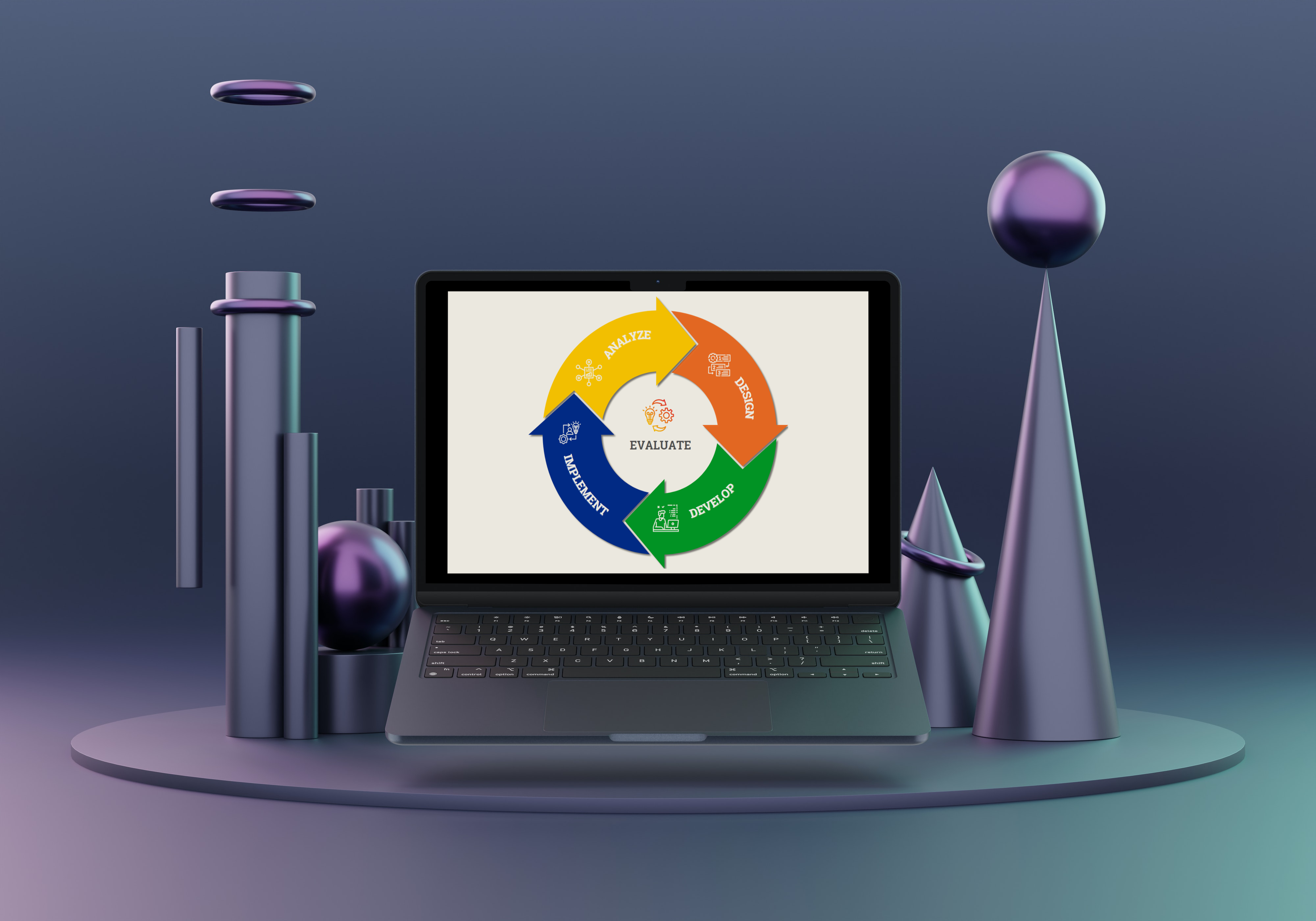
ADDIE
Design PhaseThe ADDIE model is a systematic instructional design model consisting of five phases: (1) Analysis, (2) Design, (3) Development, (4) Implementation, and (5) Evaluation. Various flavors and versions of the ADDIE model exist making use of a vertical approach. This leads to more flexibility within the model compared to its original linear form.
Analysis Phase
 In the Analysis Phase
In the Analysis Phase
- Who are the learners and what are their characteristics?
- What is the desired new behavioral outcome?
- What types of learning constraints exist?
- What are the delivery options?
- What are the pedagogical considerations?
- What are the Adult Learning Theory considerations?
- What is the timeline for project completion?
Design Phase
 In the Design Phase, we define the necessary learning objectives, assessment instruments, exercises
In the Design Phase, we define the necessary learning objectives, assessment instruments, exercises
- Document the project’s instructional, visual and technical design strategy
- Apply instructional strategies according to the intended behavioral outcomes by domain (cognitive, affective, and psychomotor).
- Design the user interface and/or user experience
- Create a prototype
- Apply visual design (graphic design)
Development Phase
 In the Development Phase, we create and assemble the content assets that were blueprinted in the design phase. In this phase, storyboards and graphics are designed. If eLearning is involved, we develop and/or integrate the technologies as well as perform debugging procedures. The project is reviewed and revised according to the feedback received.
In the Development Phase, we create and assemble the content assets that were blueprinted in the design phase. In this phase, storyboards and graphics are designed. If eLearning is involved, we develop and/or integrate the technologies as well as perform debugging procedures. The project is reviewed and revised according to the feedback received.
- Advanced lesson options – Share folders, clone, copy-properties or restrict participation are a few of the advanced lesson options
- Skill gap tests – Identify the skills that your students lack and personalize their training paths
Implementation Phase
 During the Implementation Phase, we put the plan into action and we develop a procedure for training the learners and teachers. Materials are delivered or distributed to the learner group. After delivery, the effectiveness of the training materials is evaluated.
During the Implementation Phase, we put the plan into action and we develop a procedure for training the learners and teachers. Materials are delivered or distributed to the learner group. After delivery, the effectiveness of the training materials is evaluated.
- SCORM 2004 – Support for the latest iteration of industry standard SCORM 2004 (4th edition)
- Lessons, courses, and categories – Organize lessons by topic into categories. Bundle several lessons inside a course
- Social extensions – A rich set of social tools that facilitates the communication and social learning process (including
Evaluation Phase
 The Evaluation Phase consists of (1) formative and (2) summative evaluation. Formative evaluation is present in each stage of the ADDIE process. Formative assessment is typically contrasted with summative assessment. The former supports teachers and students in decision-making during educational and learning processes, while the latter occurs at the end of a learning unit and determines if the content being taught was retained.
The Evaluation Phase consists of (1) formative and (2) summative evaluation. Formative evaluation is present in each stage of the ADDIE process. Formative assessment is typically contrasted with summative assessment. The former supports teachers and students in decision-making during educational and learning processes, while the latter occurs at the end of a learning unit and determines if the content being taught was retained.
- Summative evaluation consists of tests designed for criterion-related referenced items and providing opportunities for feedback from the users.
- Advanced Reports – In addition to previous report types you can now find time-constraint reports, events reports, branch reports, participation reports, certificate reports
- Progress tracking – Several visual indications guide the user through the lesson and his current progress
- We use rapid prototyping (continual feedback) as a way to improve the generic ADDIE model and will make revisions if necessary.
References
Dick, W., & Carey, L. (1996). The Systematic Design of Instruction (4th Ed.). New York: Harper Collins College Publishers.
Leshin, C. B., Pollock, J., & Reigeluth, C. M. (1992). Instructional Design Strategies and Tactics.
Englewood Cliffs, NJ: Education Technology Publications. Branch, R. M. (2009). Instructional design: The ADDIE approach (Vol. 722). Springer Science & Business Media.
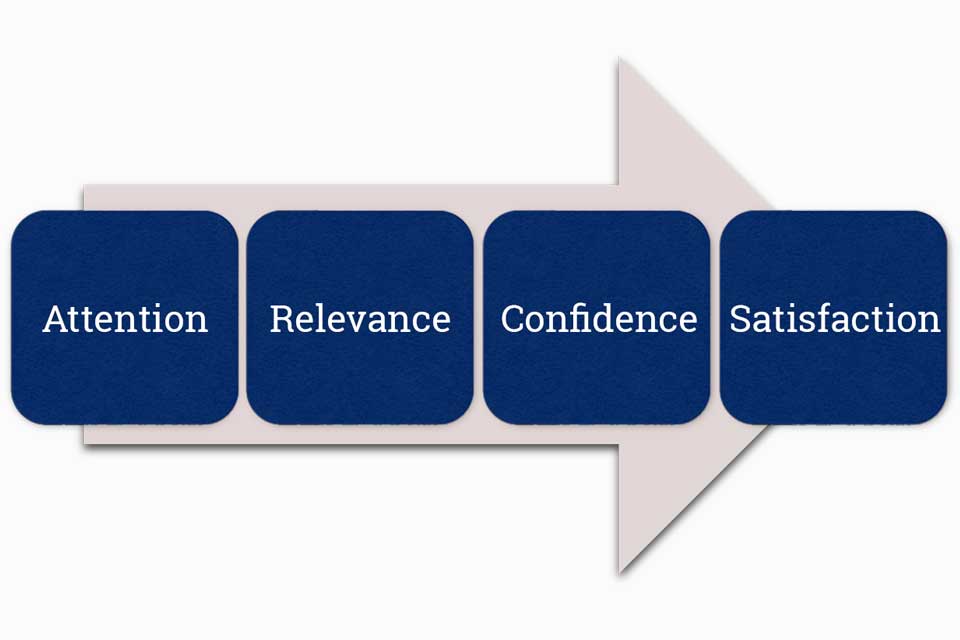
ARCS Model of Motivational Design
John Keller is the founder of the ARCS Model of Motivation, which is based upon the idea that there are four key elements in the learning process which can encourage and sustain learners’ motivation. These four elements form the acronym ARCS of the model and stand for Attention, Relevance, Confidence and Satis, action (ARCS).
Attention
Methods for grabbing the learners’ attention include the use of:
- Active participation – Adopt strategies such as games, role play or other hands-on methods to get learners involved with the material or subject matter.
- Variability – To better reinforce materials and account for individual differences in learning styles, use a variety of methods in presenting material (e.g. use of videos, short lectures, mini-discussion groups).
- Humor -Maintain interest by
use a small amount of humor (but not too much to be distracting) - Incongruity and Conflict – A devil’s advocate approach in which statements are posed that go against a learner’s past experiences.
- Specific examples – Use
a visual stimuli , story, or biography. - Inquiry – Pose questions or problems for the learners to solve, e.g. brainstorming activities.
Relevance
Establish relevance in order to increase a learner’s motivation. To do this, use concrete language and examples with which the learners are familiar. Six major strategies described by Keller include:
- Experience – Tell the learners how the new learning will use their existing skills. We best learn by building upon our
preset knowledge or skills. - Present Worth – What will the subject matter do for me today?
- Future Usefulness – What will the subject matter do for me tomorrow?
- Needs Matching – Take advantage of the dynamics of achievement,
risk taking , power, and affiliation. - Modeling – First of all, “be what you want them to do!” Other strategies include guest speakers, videos, and having the learners who finish their work first to serve as tutors.
- Choice – Allow the learners to use different methods to pursue their work or allowing s choice in how they organize it.
Confidence
- Help learners understand their likelihood for success. If they feel they cannot meet the objectives or that the cost (time or effort) is too high, their motivation will decrease.
- Provide objectives and prerequisites – Help learners estimate the probability of success by presenting performance requirements and evaluation criteria. Ensure the learners are aware of performance requirements and evaluative criteria.
- Allow for success that is meaningful.
- Grow the Learners – Allow for small steps of growth during the learning process.
- Feedback – Provide feedback and support internal attributions for success.
- Learner Control – Learners should feel some degree of control over their learning and assessment. They should believe that their success is a direct result of the amount of effort they have put forth.
Satisfaction
- Learning must be rewarding or satisfying in some way, whether it is from a sense of achievement, praise from a higher-up, or mere entertainment.
- Make the learner feel as though the skill is useful or beneficial by providing opportunities to use newly acquired knowledge in a real setting.
- Provide feedback and reinforcement. When learners appreciate the results, they will be motivated to learn. Satisfaction is based
upon motivation, which can be intrinsic or extrinsic. - Do not patronize the learner by over-rewarding easy tasks.
References
Keller, J. M. (2009). Motivational design for learning and performance: The ARCS model approach. Springer Science & Business Media.
Keller, John M. “Development and use of the ARCS model of instructional design.” Journal of instructional development 10, no. 3 (1987): 2-10.
70:20:10 Model
 It is widely suggested that 70:20:10 is based on the work of Morgan McCall, Robert Eichinger and Michael Lombardo who were working at the Center for Creative Leadership in the 1980s when they suggested leaders develop best through means other than formal training.
It is widely suggested that 70:20:10 is based on the work of Morgan McCall, Robert Eichinger and Michael Lombardo who were working at the Center for Creative Leadership in the 1980s when they suggested leaders develop best through means other than formal training.
Since then Eichinger and Lombardo have gone on to suggest that lessons learned by managers roughly divide into 70:20:10, and, in a recent publication McCall (2010) suggests that 70:20:10 originated from data reported in McCall, Lombardo
A notable exception is one organization that uses the 70:20:10 label, though in application it is closer to 40% on the job, 30% coaching and mentoring, and 30% formal training. Another company reported that it had adjusted the breakdown to 50:30:20 to better suit its business needs.
To demonstrate the range of interpretations, the following table is a sample of different types of 70:20:10 interpretations.
A multinational company
20% of learning comes from daily contact with colleagues and management.
10% of learning comes from formal methods such as e-learning, the classroom, external courses.
A distribution organisation
20% of learning is from others such as mentoring and learning from seniors and peers.
10% of learning is from formal and informal channels
A professional services firm
20% of learning is undertaken through others such as social networking, performance conversations, work shadowing, communities of practice and social activities.
10% of learning is formal or prescribed.
An online development company
References
McCall, M. W. (2010), ‘Peeling the onion: Getting inside experience-based leadership development’, Industrial & Organizational Psychology, vol. 3, issue 1, pp. 61-68.
Lindsey, E. H., Homes, V. & McCall, M. W. (1987), Key Events in Executives’ Lives, Center for Creative Leadership, Greensboro, North Carolina.
Learning Theories
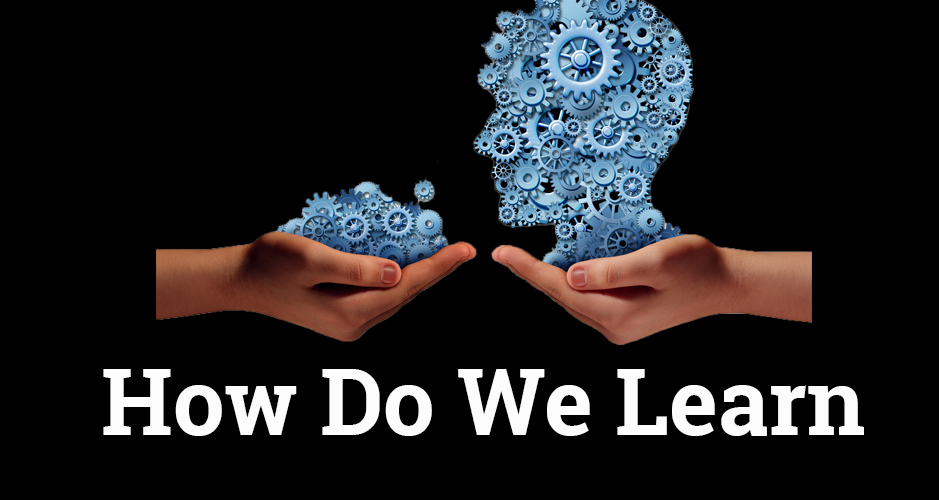
Cognitivism
The cognitivist revolution replaced behaviorism in
References
Ertmer, P. A., & Newby, T. J. (1993). Behaviorism, cognitivism, constructivism: Comparing critical features from an instructional design perspective.Performance improvement quarterly, 6(4), 50-72.
Cooper, P. A. (1993). Paradigm Shifts in Designed Instruction: From Behaviorism to Cognitivism to Constructivism. Educational technology, 33(5), 12-19.
Constructivism
A reaction to didactic approaches such as behaviorism and programmed instruction, constructivism states that learning is an active, contextualized process of constructing knowledge rather than acquiring it. Knowledge is constructed based on personal experiences and hypotheses of the environment. Learners continuously test these hypotheses through social negotiation. Each person has a different interpretation and construction of
References
Vygotsky, L. S. (1980). Mind in society: The development of higher psychological processes. Harvard university press.
Piaget, J. (2013). The construction of reality in the child (Vol. 82). Routledge.
Ertmer, P. A., & Newby, T. J. (1993). Behaviorism, cognitivism, constructivism: Comparing critical features from an instructional design perspective.Performance improvement quarterly, 6(4), 50-72.
Social Learning Theory
People learn through observing others’ behavior, attitudes, and outcomes of those behaviors[1]. “Most human behavior is learned observationally through modeling: from observing others, one forms an idea of how new behaviors are performed, and on later
Social learning theory explains human behavior in terms of continuous reciprocal interaction between cognitive, behavioral, and environmental influences.
References
Bandura, A. (1977). Social Learning Theory. New York: General Learning Press.
Bandura, A. (1973). Aggression: A Social Learning Analysis. Englewood Cliffs, NJ: Prentice-Hall.
Bandura, A. & Walters, R. (1963). Social Learning and Personality Development. New York: Holt, Rinehart & Winston.
Gamification in Education
Gamification in education, or gamification in learning, is sometimes described using other terms: gameful thinking, game principles for education, motivation design, engagement design, etc. It is different from game-based learning in that it does not involve students making their own games or playing commercially-made video games. It operates under the assumption that the kind of engagement that gamers experience with games can be translated to an educational context towards the goals of facilitating learning and influencing student behavior. Since gamers voluntarily spend lots of hours playing games and problem-solving, researchers and educators have been exploring ways to use the power of
References
Malone, T. W. (1981). What makes things fun to learn? A study of intrinsically motivating computer games.
E-learning Design Principles
The researchers started from an understanding of cognitive load theory to establish the set of principles that compose e-learning theory. Cognitive load theory refers to the amount of mental effort involved in working memory, and these amounts are categorized into three categories: extraneous, intrinsic, and germane.
Extraneous cognitive load is any effort imposed by the way that the task is delivered (having to find the correct essay topic on a page full of essay topics).
Intrinsic cognitive load refers to the effort involved in performing the task itself (actually writing the essay).
Germane cognitive load describes the effort involved in understanding a task and accessing it or storing it in long-term memory (for example, seeing an essay topic and understanding what you are being asked to write about).
Program Overview
Blended Learning, Microlearning, and Face-To-Face Training – The Perfect Mix! The program takes an evidence-based approach. To allow for a smooth integration of iterative and recursive learning as well as cognitive processes, all elements that focus on the cognitive level are dealt with via asynchronous learning. All elements that focus on the affective and behavioral level need to be dealt with in an instructor-led setting.
The Program offers up to:
14 hours of self-paced online learning
Microlearning via the user-friendly OTTO LEARN App
Up to 16 hours of face-to-face training
Coaching on demand during the first 6-12 months
Reintegration Training (Coming Home)
Need to know more!
Check out our Backpacker Package our promotional Intercultural Program to give you a taste of our perfectly integrated learning solution!
To book our training program, simply give us a call at +49 15146502360 or send us an email to:
Netherlands: info@bilingual solutions.nl or Germany: kontakt@bilingual solutions.institute
Get a first impression here: bilingualsolutions.academy
Credit Images:
Ben White on Unsplash

Award-Winning
Innovative Training Solutions


Intercultural Preparation Training Provider Of The Year 2021/22 | Netherlands

Best Educational Training & Coaching Solutions - North Holland In The 2021 Benelux Enterprise Awards
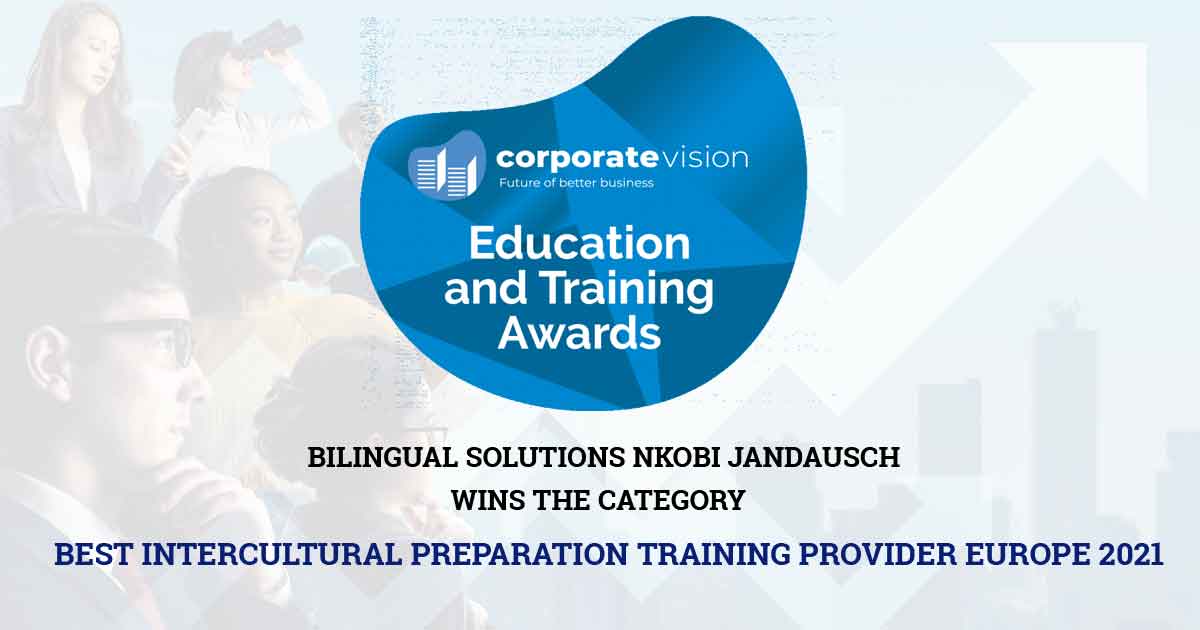
Best Intercultural Preparation Training Provider Europe 2021
The Best Solution For Professional Development
A PERFECTLY INTEGRATED AWARD-WINNING LEARNING SOLUTION





